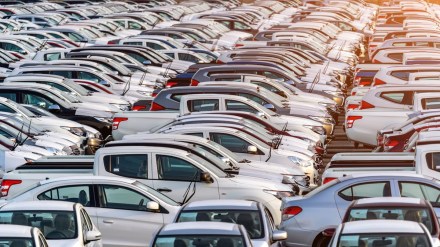India’s automobile retail industry hit a record high in October, with overall sales rising 40.5% year-on-year (YoY) driven by GST reform, festive and rural demand. According to a report by the Federation of Automobile Dealers Associations (FADA), the 42-day festive period covering Dussehra to Diwali posted record numbers with a 21% YoY increase, cementing it as the strongest festive cycle in India’s automotive history.
FADA President C S Vigneshwar said, “After an almost quiet September for the first 21 days due to the GST 2.0 transition, October witnessed a swift rebound — almost like a hurdle race where pent-up demand passed the baton to festive sentiment and tax-cut excitement, propelling sales to historic levels.”
“The 42-day festive period of 2025 stands as a defining milestone for India’s auto retail, delivering the highest-ever sales and growth across categories,” he added.
Record October sales
According to FADA, for October, automobile retail sales rose to 40,23,923 units, driven by all-time high monthly sales of both passenger vehicles and two-wheelers. Two-wheeler sales grew 51.8% to 31.5 lakh units, while passenger vehicle sales rose 11.35% to 5.57 lakh units.
Commercial vehicle sales expanded 17.7%, while tractor sales grew 14.2%. Three-wheelers saw a modest rise of 5.4%. The only laggard was the construction equipment segment, which declined 30.5% due to project delays and financing constraints.
Festive period delivers 21% growth
During the 42-day festive period between Dussehra and Diwali, overall vehicle retails rose 21% year-on-year to an all-time festive high. Two-wheeler sales grew 22%, passenger vehicles 23%, commercial vehicles 15%, tractors 14%, and three-wheelers 9%.
“The GST 2.0 vision of empowering affordability and boosting middle-class consumption found real reflection on dealership floors. Compact and sub-4-metre cars saw strong resurgence as reduced tax rates expanded the buying base. Dealers also noted that retail momentum exceeded supply in several models,” Vigneshwar said.
Dealers across India reported record enquiries and higher conversions, as customers advanced their purchases to take advantage of GST benefits and festive schemes.
Rural India leads the charge
Rural India emerged as the main growth driver, aided by a good monsoon, higher farm incomes, and infrastructure spending. Rural passenger vehicle sales grew over three times faster than in cities, while rural two-wheeler growth nearly doubled the urban rate.
FADA said the introduction of GST 2.0 lowered tax rates on small cars and entry-level two-wheelers, making vehicle ownership more affordable for first-time buyers.
OEM market leaders
In the passenger vehicle segment, Maruti Suzuki led with a 43% market share, followed by Tata Motors (13.5%) and Mahindra (12.2%). In two-wheelers, Hero MotoCorp dominated with 31.6%, followed by Honda (26.1%) and TVS (17.7%).
Optimistic outlook
FADA said the momentum is likely to continue through the marriage season and post-harvest months. “GST 2.0 continues to anchor affordability under the ‘Simpler Tax, Stronger Growth’ vision,” it said.
Dealer confidence remains high, with 64% expecting growth in November and nearly 70% anticipating expansion over the next three months. Strong rural cash flows, steady infrastructure activity, and new vehicle launches are expected to support retail momentum into early 2026.
